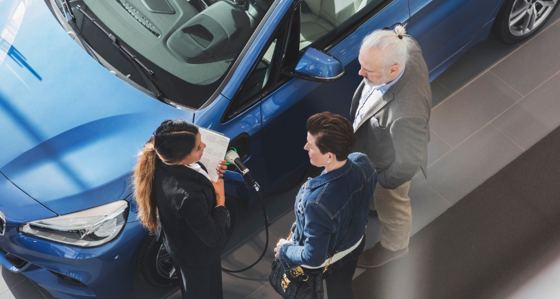
Is the UK EV transition stuck in neutral?
12 November 2021
The UK combustion engine ban and COP26 declaration, while important in ambition, may not have a significant enough impact on CO2 emissions from road transport by 2050.
Amongst the buzz of politicians, delegates, media and celebrities at Glasgow, the UK government declared an acceleration of the transition to zero emission vehicles. The declaration was a welcome surprise, but I believe the sale of new internal combustion engine (ICE) vehicles is just the tip of the iceberg when it comes to the UK electric vehicle (EV) transition and we must take into account the UK’s total fleet of vehicles if we want to truly impact carbon emissions from road transport.
Baringa’s analysis shows that 25 million combustion engine cars will still be on the road in 2030 when the UK government’s ban on new ICE sales comes into force, and that even by 2040 there will still be 8 to 9 million ICE vehicles in use i.e. nearly 30% of the cars on the road.
A similar effect is expected on vans and HGVs both of whom have a ban on new combustion engine sales by 2035 and 2040 respectively.
As a result, I believe the UK EV transition may be happening too slowly for it to have the intended effect of significantly reducing carbon emissions levels.
For every new car sale there are four second-hand cars sold, and there are currently 33 million cars in total on UK roads. Based on the current trajectory the death of fossil fuel powered cars on our streets will be a long time coming, due to the natural and steady substitution of ICEs for EVs, driven by consumer and market forces rather than sharper intervention.
Several large automotive manufacturers signed up to the UK-led declaration and I think the rest will eventually be pulled in by the gravity of market forces. A combination of demand, supply and policy factors will drive EV adoption, but EVs on the road will only overtake ICE vehicles on the road in the late 2030s, with ~3 million cars still in circulation in 2050 and even more vans & HGVs.
There are several factors which could influence the speed of the transition including scrappage schemes, expanding the role of Ultra Low Emissions Zones, the price of second-hand electric vehicles and better assurance on the battery life of second hand vehicles. Critically, though, the Government must think more about how to manage any impacts on lower income drivers,other parts of the automotive value chain such as dealerships, aftermarket and leasing companies as wel as small businesses who may be more exposed to interventions affecting older cars and the second hand market.
I think we need to do more to steepen the glide path towards 100% zero emissions vehicles if the UK government’s pledges on transport are to have a significant impact on CO2 emissions. Clearly this change cannot happen overnight as it requires huge upheaval of the whole automotive ecosystem, however the government must look at how to accelerate this transition of the vehicles on the road, not just new sales and in a way which involves the whole value chain, not just manufacturers.
For more information of Baringa's analysis or our mobility services, contact Natasha Patel.
Related Insights

Trump trade tariffs: Impact on the UK EV uptake
The global automative industry is at a critical juncture, shaped by intersecting forces of electrification, geopolitical trade tensions, and national decarbonisation policy.
Read more
From early adopters to early majority: Driving the next phase of EV growth
As EVs are moving beyond the early adopter phase, what are the principles needed for mass market adoption and progressing towards net zero targets?
Read more
Commercial fleet electrification – adoption is accelerating, but barriers remain
With 50% of new car registrations in the UK being registered by businesses, it’s vital for companies to start electrifying their fleets.
Read more
We modelled the future of electric vehicles in Belgium with Synergrid
To power a switch to cleaner transport, we helped Synergrid understand what more electric vehicles on the road would do to the network.
Read moreIs digital and AI delivering what your business needs?
Digital and AI can solve your toughest challenges and elevate your business performance. But success isn’t always straightforward. Where can you unlock opportunity? And what does it take to set the foundation for lasting success?